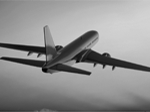Accessories, Airports, Cargo Terminals, Freight Forwarders, CARE, Ground Handlers, Regulators, ULD Service providers, Safety
Regulations – The Process
Everyone agrees that the airline industry in all its components needs to be regulated. As noted in the previous article, the R in our ULD CARE logo stands for Regulations… smart regulations.
At the same time however, the activities that go on in the background to create, revise and implement regulations may be less well understood. In this article we will endeavor to cast some light on how, where, when and by whom these essential activities are carried out. The purpose in doing so is to help our readers understand more about these processes and to encourage them to become a more active participant in the process where this may be possible.
The top level regulations that apply to aviation are the Federal Aviation Regulations in the USA, and in Europe the EASA Regulations. There are equivalents in almost every country in the world. These regulations cover every aspect of aviation activity in their country and are the basis for all aviation activity.
For ULDs there are a number of regulations that have some bearing:
For the operation of ULDs as a restraint device during flight, the ULDs must comply with the requirements of the aircraft Weight and Balance Manual. These must be created by the aircraft manufacturer under the regulations relating to the design and manufacture of an aircraft
For the design and manufacture of a ULD, the designer must comply with the regulations for the design of items under Technical Standard Orders while the manufacture must be carried out under the regulations for manufacturing of aircraft parts and equipment.
For the repair of ULDs, the repair shop must comply with the regulations for the operation of an aircraft maintenance facility.
Generally it can be said that while regulations governing processes and procedures originate from the various National Civil Aviation Authorities such as FAA, EASA etc. the regulations governing the design standards of a ULD begin life in an SAE International (SAE) committee. This might seem unusual but the FAA and EASA do not see themselves as being technical experts on ULD management, and so they turn to other organizations who may have such expertise to create the product specific content. In the case of ULDs this means requesting the SAE International (http://www.sae.org), a body who creates standards for various industries including aerospace, or ISO , The International Organization for Standardization (http://www.iso.org/iso/home.html), both of whom have committees who work on the creation of new standards through a well-established process. In excess of 70 different FAA TSO’s are based on such standards.
Both committees are open to anyone wishing to participate. The “spring” meetings of both the SAE and the IATA ULD Panel have just recently been held, back to back, in Amsterdam. The next SAE AGE 2A – relevant to air cargo matters – will be held in Montreal from September 24th to 26th. The next IATA ULD Panel meeting will be held in Hong Kong in early September. Generally the membership is comprised of airlines, manufacturers, aircraft and Cargo Loading System manufacturers. Representatives of the FAA and EASA are generally in attendance at relevant meetings. Old standards are reviewed and new standards are created on an ongoing basis by these two organizations. For instance the new standard for ULD certification – AS 36100 – is a result of the work carried out by SAE and ISO over many years. Participating in these meetings is a great way to both lean more about and influence the decisions that impact most aspects of ULD.
Once a standard has been published this can be taken by the FAA and EASA to create their own form of regulation called a Technical Standard Order, TSO (or ETSO for EASA). We will add more detail to this area in future ULD CARE articles.



Comments are closed.